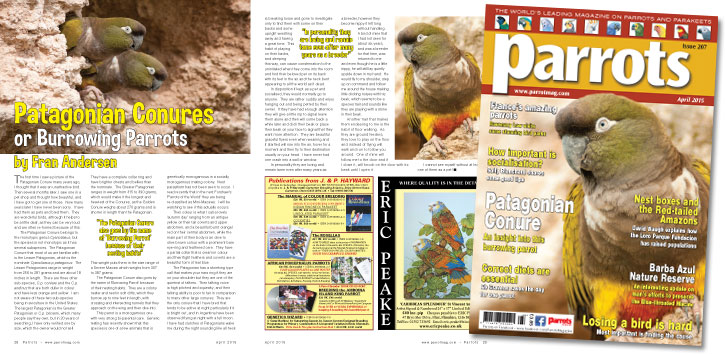
By Fran Andersen
The first time I saw a picture of the Patagonian Conure many years ago, I thought that it was an unattractive bird. Then several months later, I saw one in a pet shop and thought how beautiful, and I have got to get one of those. Now many years later I have never been sorry. I have had them as pets and bred them. They are wonderful birds, although it helps to be a little deaf, as they can be very loud and are often re-homed because of this.
The Patagonian Conure belongs to the monotypic genus Cyanoliseus, but the species is not monotypic as it has several subspecies. The Patagonian Conure that most of us are familiar with is the Lesser Patagonian, which is the nominate Cyanoliseus p patagonus. The Lesser Patagonians range in weight from 256 to 281 grams and are about 18 inches in length. There are three other sub-species, C.p. conlara and the C.p. andinus that are both duller in colour and have less orange and yellow. I am not aware of these two sub-species being in aviculture in the United States. The largest Patagonian is the Greater Patagonian or C.p. bloxami, which many people say they own, but in 20 years of searching, I have only verified one by size, which the owner would not sell.
Buy Now!








Parrot Chat
Buyers Guides
Breeding articles